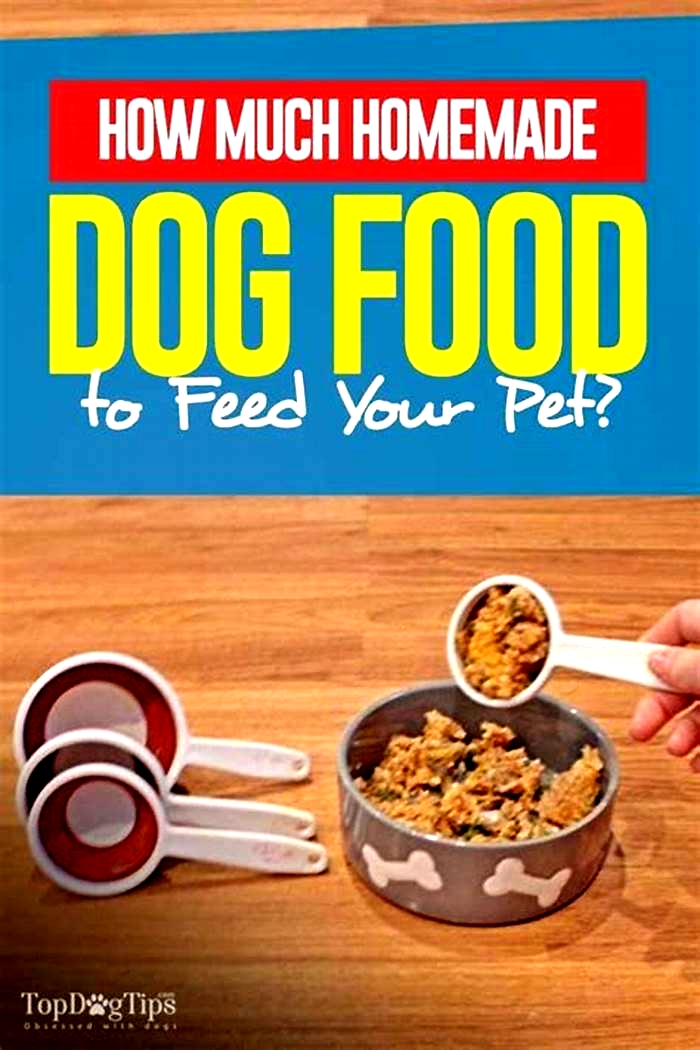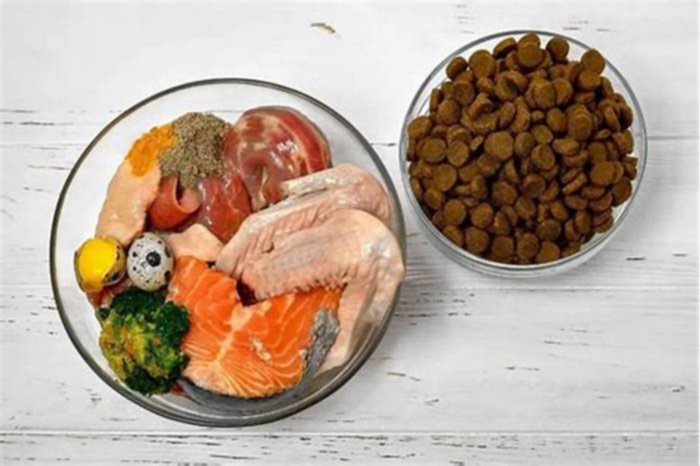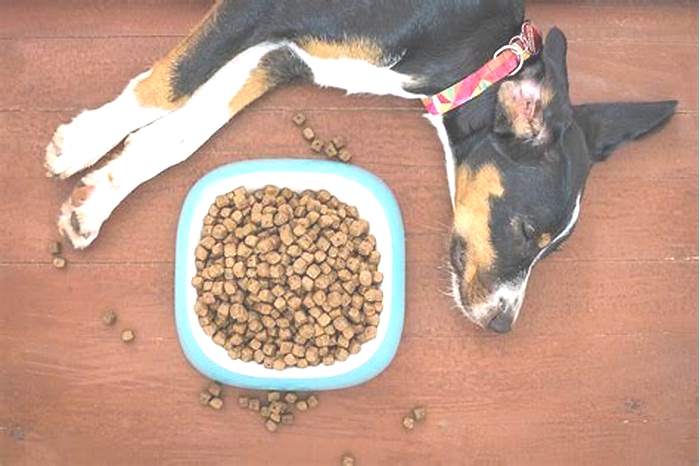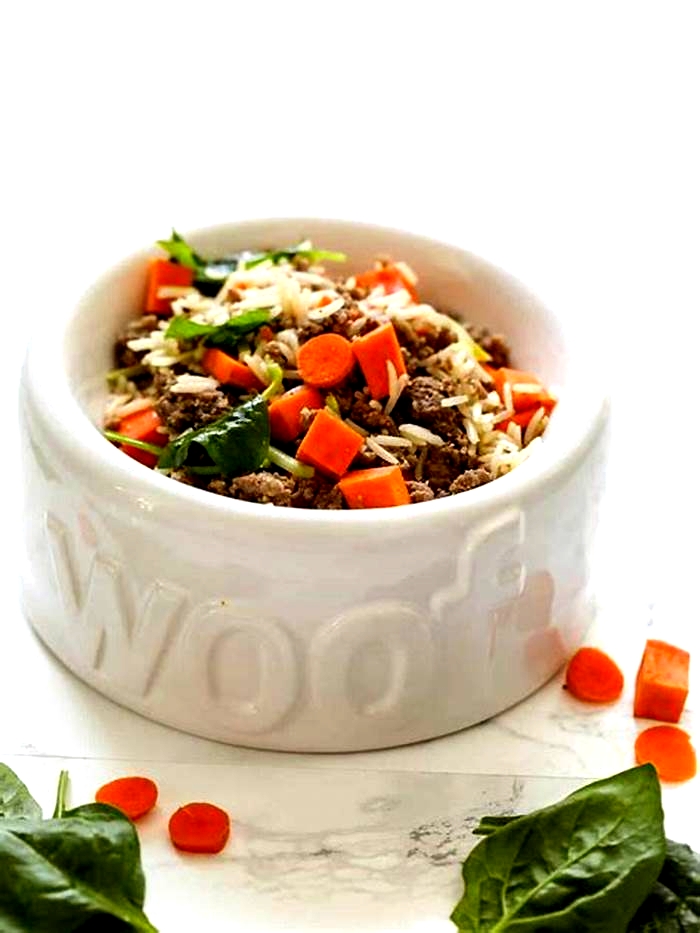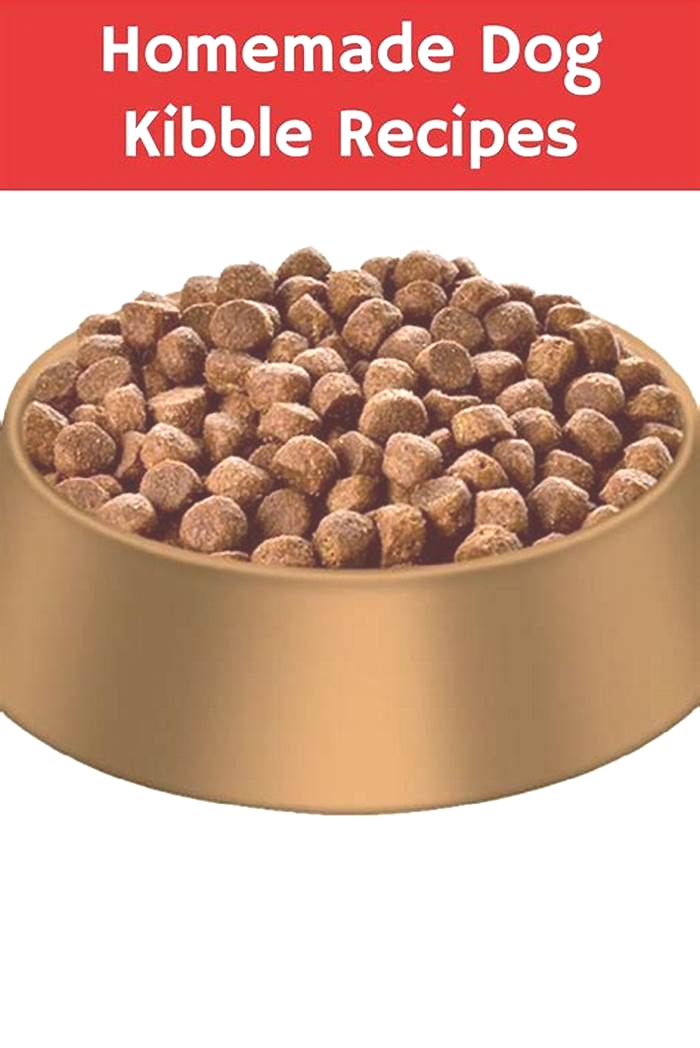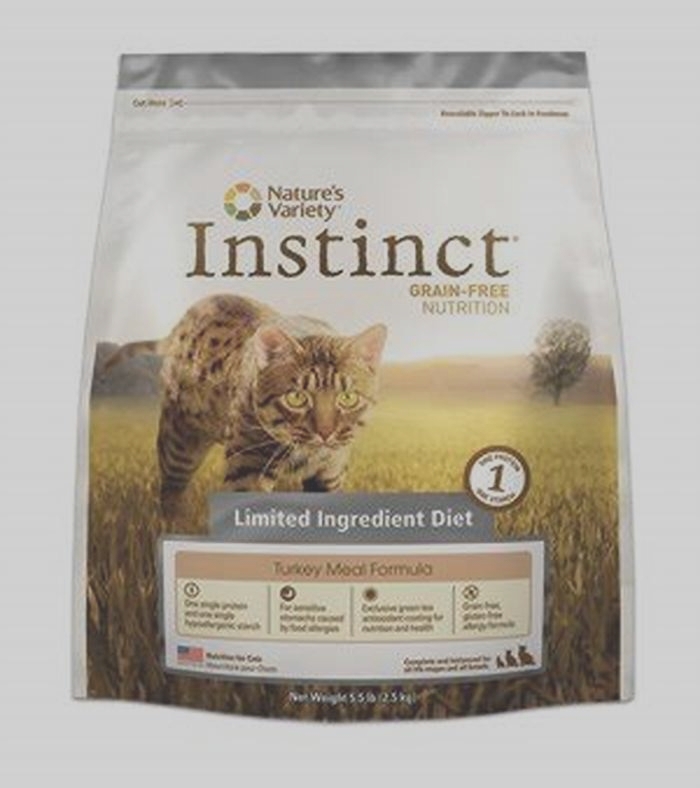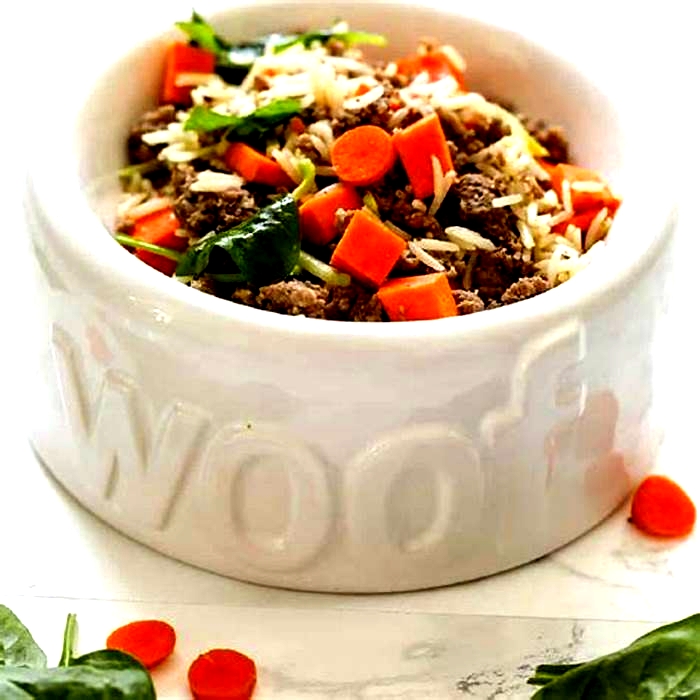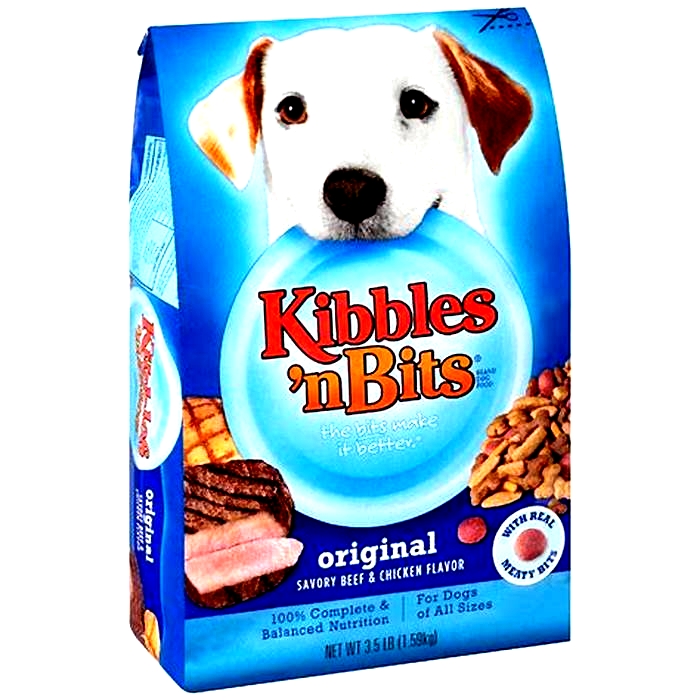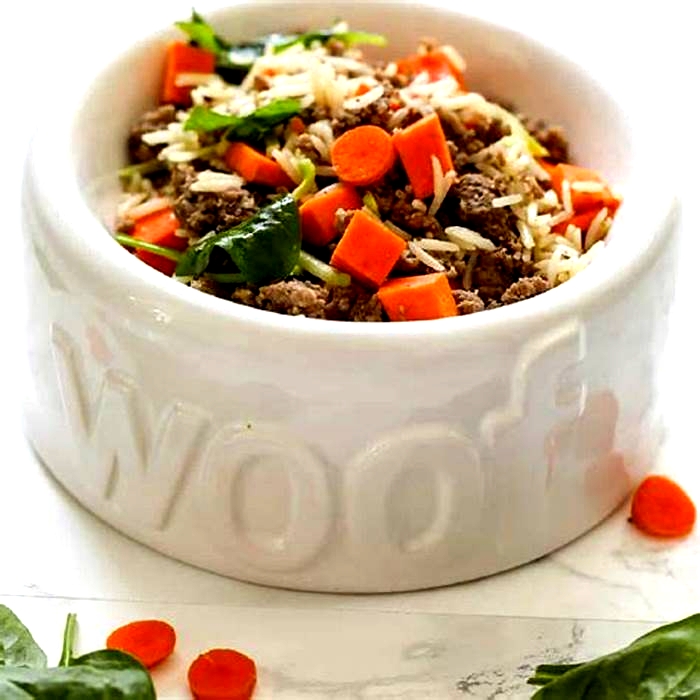homemade dog food vs kibble cost
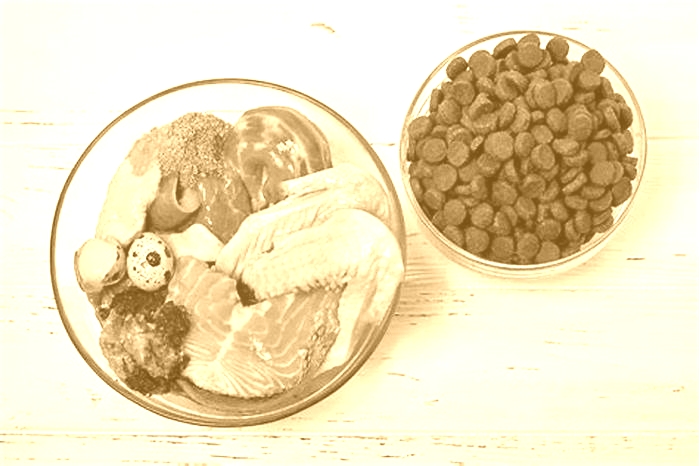
Kibble vs. Homemade Dog Food (Which is Better?)
If youve been thinking about what to feed your dog, you might have considered a few brands and types of dog food. From kibble, canned wet food, and raw, there is a lot you can feed your dog. You also have the option of preparing food at home for your dog. But which option is better, kibble or homemade dog food?
Kibble is better than homemade dog food regarding nutritional value, while homemade dog food is more appealing to dogs. When it comes to kibble vs. homemade dog food, the homemade variety wins for fussy eaters, while kibble wins for dogs in general and is less costly.
Both have pros and cons, and you must consider them before choosing one.
In this article, we will get deeper into the discussion of dry dog food vs. homemade food, with the pros and cons of each type of dog food.
One thing to note is that when Im talking about kibble, Im referring to a good-quality brand that is complete and balanced in line with the AAFCO dog nutritional requirements.
I will also briefly cover the types of homemade food that are most nutritious for dogs and what you must look for when selecting kibble for your dog.
Regardless of which type of food you pick, in the end, you will gain useful insights from this post.
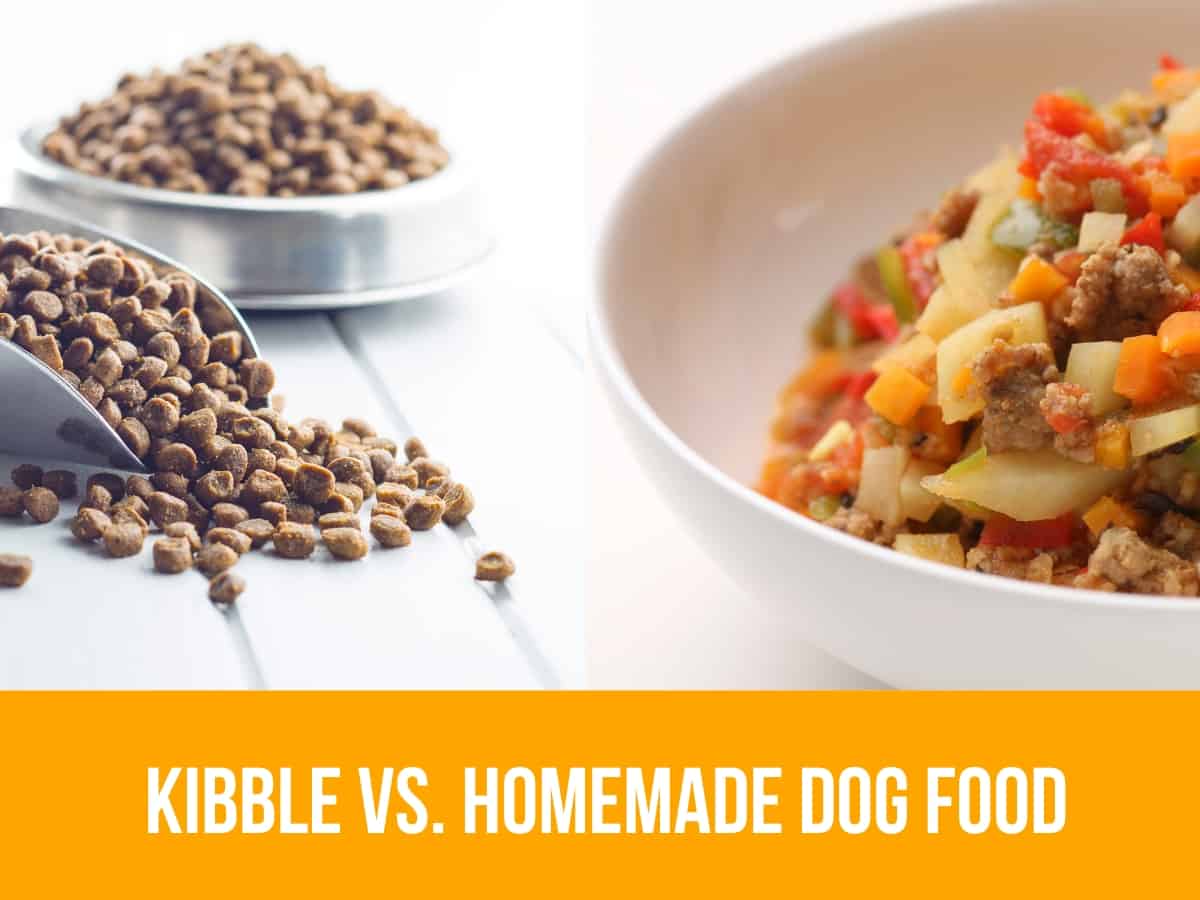
Is Homemade Dog Food Better Than Kibble?
Homemade dog food can be as good as kibble or even better for your dog based on its nutritional content and how much he likes it.
Kibble is no good to a dog that doesnt eat it. Similarly, homemade food is not good for a dog if the dogs nutritional needs are not met.
Biologically, the place where the food is made matters very little. What matters are its nutritional value and how fond your dog is of said food. With those metrics in mind, heres how homemade dog food fares against kibble.
Nutrition
Dog food businesses manufacture kibble with research and development departments dedicated to getting the nutritional makeup of dog food just right for specific breeds and life stages of dogs.
In contrast, homemade food can be nutritious but might overshoot in calories or be a subpar source of nutrients. While exceptions exist, kibble is often more nutritious than homemade dog food.
One exception is if you employ the services of a pet nutritionist. The American College of Veterinary Nutrition has a directory of nutritionists, and you can have a remote consultation.
Adoption/Acceptance
Generally, dogs love homemade food more than kibble. Dogs can smell the aroma of homemade food and feel its moisture content, which are significant contributors to the canine food consumption experience.
On the other hand, kibble is dry and often needs toppers and moistening before it is appetizing for dogs. In this matter, homemade food beats kibble.
Again, exceptions do exist, but generally speaking, your dog is more likely to eat homemade food, but a good quality kibble is probably healthier for him.
If your dogs main problem is that he does not like his food, then you might want to introduce homemade food to your dogs diet.
If the issue is related to nutrition, you might want to consult a vet or expert canine nutritionist regarding the contents of the food recipe or introduce him to kibble.
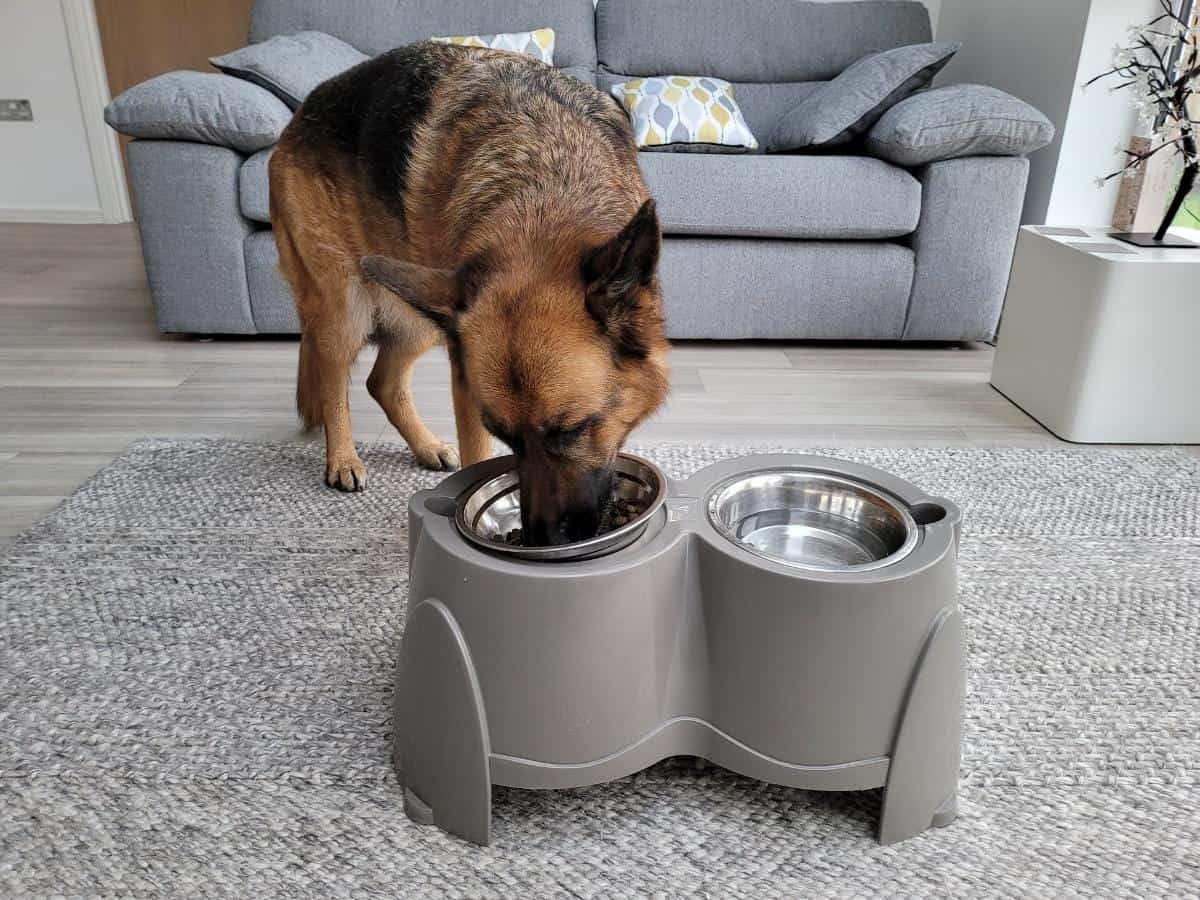
Pros And Cons Of Kibble
| Pros of Kibble (vs. Homemade Dog Food) | Cons of Kibble (vs. Homemade Dog Food) |
|---|---|
| It is formulated to contain the nutrients your dog needs | Top brands can be expensive, especially cold pressed |
| It is easy to carry as it is not too aromatic | You have to keep buying it at a regular frequency |
| It is easy to store because it is dry | Your dog might not be fond of kibble |
| It is cheaper than homemade dog food | It can contain highly processed ingredients |
| It does not need to be cooked unlike homemade dog food | It has a very low moisture content |
| It is generally safe for dogs | The longer it is stored, the higher health risk it poses |
| It is easily available (homemade recipe ingredients might not be) | It can contain unhealthy colorings and chemicals |
Read more: Is Kibble Bad For Dogs? If So, Why?

Pros And Cons Of Homemade Dog Food
| Pros of Homemade Dog Food (vs. Kibble) | Cons of Homemade Dog Food (vs. Kibble) |
|---|---|
| It is more appealing to your dog | Being wet (or semi-wet), it is harder to store |
| It improves your dogs self-esteem (he can see you cook the food just like you cook yours) | It is hard to carry because its smell is very obvious |
| Peace of mind (you know whats in your dogs diet) | You have to cook it |
| It has a high moisture content | It might not hit the nutritional requirements |
| You can customize the recipe according to your dogs dietary needs | Your dog might become overweight or undernourished |
So, whats the bottom line?
From a surface-level assessment of the pros and cons of both dry dog food and homemade dog food, it is clear that there are advantages to each type that are disadvantages of the other.
Most dog owners find it surprising that kibble is healthier than homemade dog food. And there is a good reason for this reaction.
Homemade food is healthier for humans because our packaged food is formulated to entice our tastebuds. Dogs dont buy their own food, so kibble makers dont factor taste as highly as the nutritional value of the food.
It might be hard to believe, but many homemade recipes are generally unhealthy for dogs. A study of 200 homemade dog food recipes found that most lacked vital nutrients. In fact, only 10 of the recipes had the correct canine nutrients.
A recent study of home-prepared pet diets found that all 106 diets analyzed had at least one nutrient below the recommendations, potentially exposing dogs to nutritional deficiencies.
Is Homemade Dog Food Healthier Than Kibble?
Homemade food is not healthier than kibble, but some recipes can be more nutritious than a low-quality kibble brand, especially if the meal has been designed and approved by a qualified dog nutritionist.
Sometimes, kibble is healthier than homemade food, but dogs dont like it as much as they like soft food. If your dog rejects kibble, which in most cases is better for him, you have a few options.
- Add a topper to the kibble This is the shortcut to get your dog to eat dry food. You can get your dog hungrily consuming kibble by sprinkling organic treats or appetizing food over the kibble.Check out the ideas in this article, 15 Easy Foods To Mix With Dry Dog Food.
- Mix kibble with canned dog food Since canned dog food and kibble are both made to meet a dogs nutritional requirements, this solution can be healthy and appetizing. You can even mix dog food brands.
- Use canned dog food instead of kibble Wet food is generally more appealing to dogs but can be unappealing to your budget. It is five times more expensive on average.
- Add homemade food to kibble You can mix homemade food with kibble to pack nutrients and flavor in a single serving.
- Add water to the kibble Adding warm water to dry dog food turns it into a yummy gravy, making it more appetizing and altering its palatability.
I like to add a topper to my dogs kibble, such as pieces of meat, chicken, veggies, or Greek yogurt. Additionally, Ill mix some wet food with my dogs dry food.
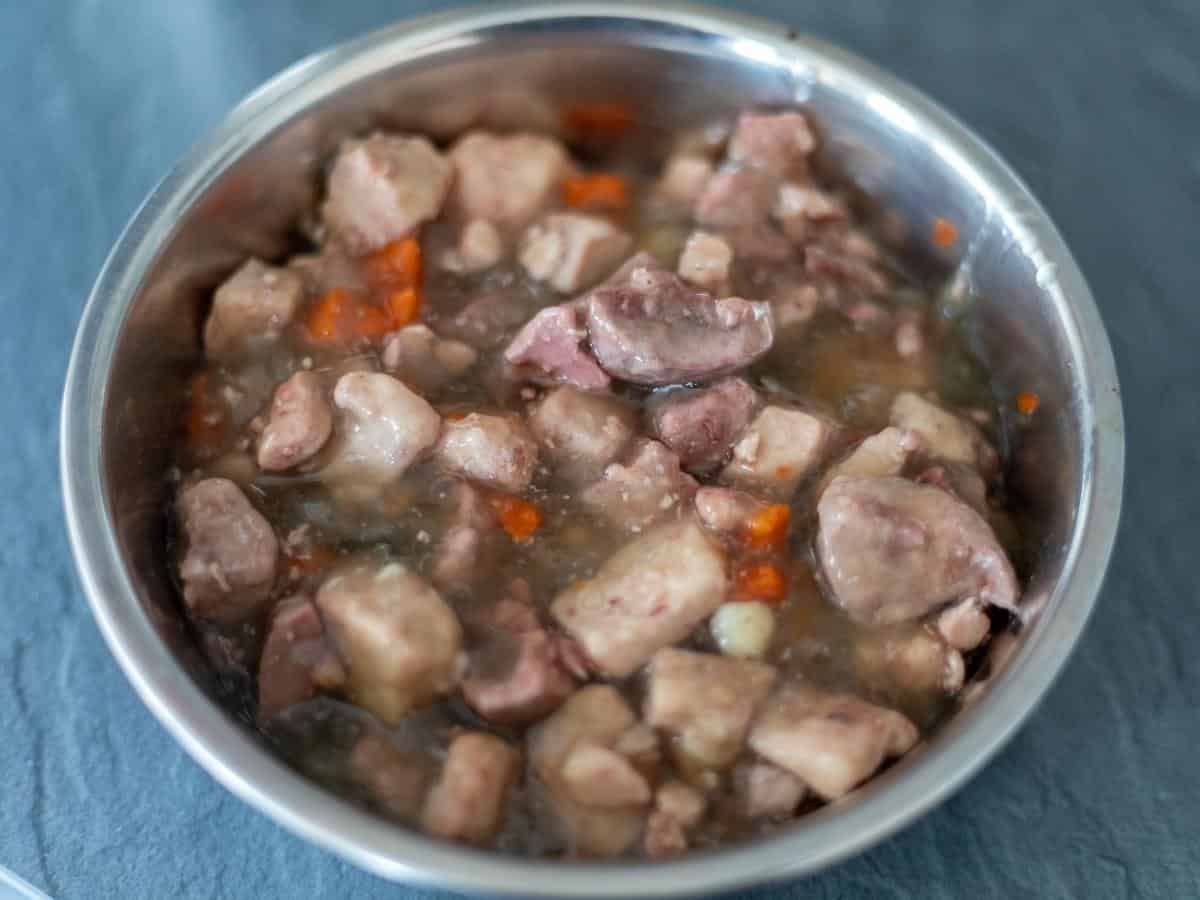
Mixing Homemade Dog Food With Kibble (A Compromise!)
You can mix homemade dog food with kibble to make kibble more appealing to your dog.
Homemade dog food might not be as nutritious as kibble, but it can improve your dogs appetite. And the kibble content can fulfill your dogs dietary requirements.
You need to be aware of the proportions of the mix and the recipe you use for homemade dog food. Getting these right is crucial for dog food that is healthy and appetizing.
While that requires another post dedicated to mixing kibble with homemade dog food, this article has yet to cover one crucial area: best practices for choosing kibble and making homemade dog food.
Best practices for choosing kibble for your dog:
- Consider the price, but dont make price all you consider The kibble your dog gets used to is the one youll be buying repeatedly. Make sure you consider that. But dont let that be your permission to buy the cheapest box available.
- Check the reviews and ratings If youre shopping on Amazon, look for dry dog food that has over 500 reviews and has at least 4.5 stars on average. This ensures you get food that enough pet owners have vouched for.
- Make your purchase specific to the breed (size) of your dog Dog food can be specific to the dog breed (like German Shepherd dog food) or can be targeted at a breed size (kibble for small dogs). If the package matches your dogs size or breed description, you can get it for your pet.
- Make your purchase specific to the life stage (age) of your dog Puppies should eat puppy food, adult dogs should eat adult dog food, and seniors should have senior food. In some instances, there is young-adult dog food as well. Ensure the kibble you buy matches your dogs age or life stage.
- Try a few types of kibble until you find the right one Dont buy your first choice of kibble in bulk. You dont know how fond your dog might be of it. You must try a few types of dry food before you find one your dog likes.
- Avoid overprocessed kibble with too many preservatives Make sure your kibble isnt packed with too many preservatives and colors. Try to get healthy kibble and choose well-known brands as they have a closer-to-nature formulation.
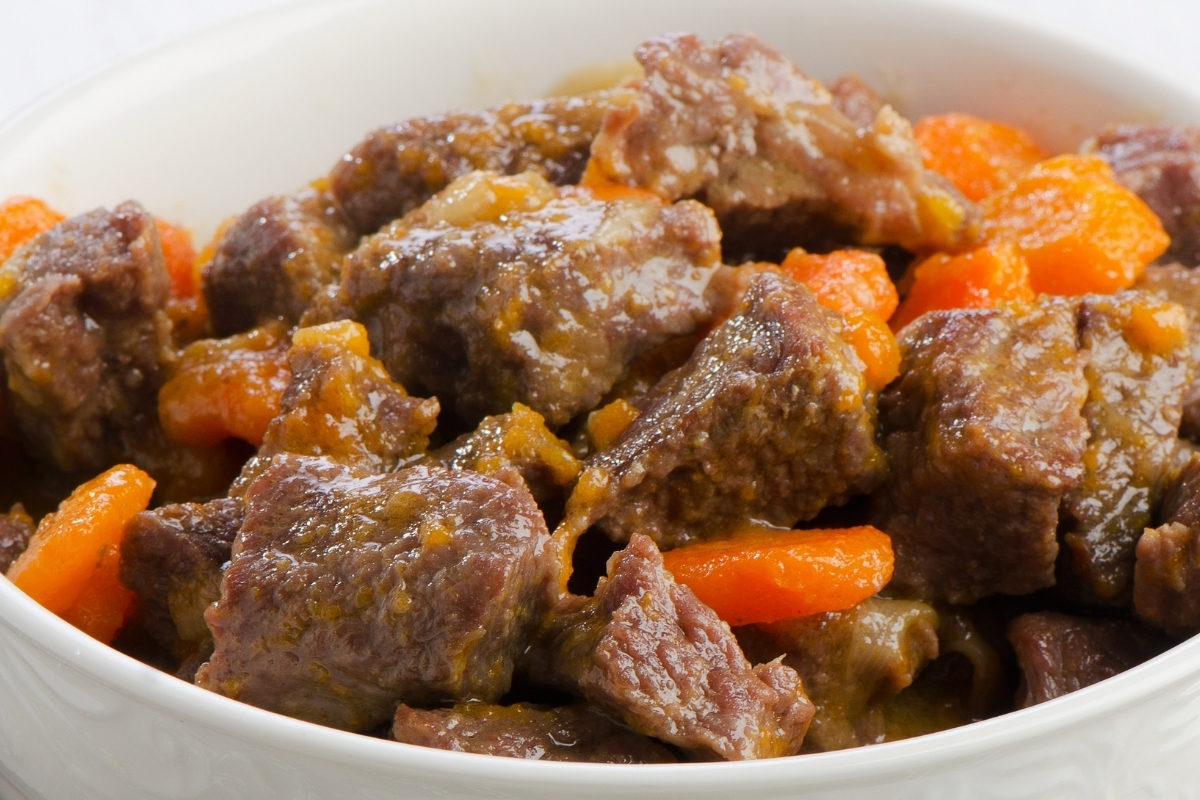
Best practices for preparing homemade food for your dog
- Use vet-verified recipes Average recipes can be undernourishing or weight-packing for dogs. Vet-verified recipes are much better if your dogs diet is supposed to be 100% homemade.
- Go protein-heavy It is harder to go wrong with protein like chicken or red meat. Make sure to include enough protein in your dogs diet. You can check your dogs nutritional needs here.
- Include some greens A small dose of veggie carbs can help add flavor and vitamins to your dogs diet.
- Bet on moisture Wet food is generally more appetizing to dogs, so cook your dog food to be less dry.
- Avoid scrap-recycling recipes Do not use recipes that recommend recycling scraps from the previous nights dinner. You will not coincidentally get a nutritious meal using a non-specific recipe.
- Store homemade food properly Store the homemade dog food properly as it doesnt have preservatives and can go bad quickly.
Lets Wrap This Up!
In a kibble vs. homemade dog food discussion, kibble emerges as a clear winner in terms of nutrition, while homemade dog food remains the more appetizing option.
You can mix the two to get the best of both worlds, but just be mindful of your recipe choice and kibble alongside the proportions.
And if youre still undecided on choosing kibble or home-cooked dog food, you might want to consider kibble vs. raw dog food.
Related Posts You May Like:
Homemade vs. store-bought: A dog food comparison
So, your usually ravenous dog isnt interested in his kibble much lately, and youre wondering if its time to change his diet. Youve heard about the trend toward homemade dog food and are thinking youll give it a try. Should you make the switch?
If you do, youll be in good company. A recent study by the University of Guelph Ontario Veterinary College in Canada found that 87% of dog owners give their pets some real food (read: suitable for humans) as part of their diet. And yet, its hard to discount the value of commercial dog food, reliably produced by an industry that dates back to the mid-1800s.
Which option is best for your dog homemade or store-bought? Here is a quick comparison to help you decide.
Fresh ingredients
Without question, homemade dog food wins in this category. When you commit to making your dog his meals, you can choose the freshest ingredients to feed him. Most commercially made dog food has a long shelf life. A bag of unopened dry dog food can last as long as 18 months; unopened canned food is good for two years. Thats why its important to check the expiration date on every bag or can of food you purchase.
Even with fresh-dog-food subscription services, such as The Farmers Dog, which says their meals arrive at your door within days of being prepared, there is a bit of a lag. If youre concerned about feeding your dog the freshest ingredients, homemade wins the day.
Nutritional value
You might think that homemade dog food beats kibble here, too, but thats not always the case. Dogs have distinctly different nutritional needs and digest food differently than humans, which means homemade meals might lack healthy ingredients that dogs need. In fact, when researchers at the University of CaliforniaDavis School of Veterinary Medicine evaluated 200 popular dog food recipes, they found 95% to be missing necessary levels of at least one essential nutrient.
In comparison, all dog food manufactured in the United States must meet U.S. Department of Agriculture requirements for balanced nutrition. Ingredients are regulated by the Center for Veterinary Medicine, which is a branch of the U.S. Food and Drug Administration. The Association of American Feed Control Officials is responsible for the enforcement of state laws regarding the safe production and labeling of animal food.
Whats the verdict? When it comes to nutritional value, store-bought food is the best choice for an active, healthy dog. The recipes are formulated for each stage of your dogs life as well as his special dietary needs, which is something thats hard to get right in your own kitchen.
Safety
Were calling this one a tie.
Lets address the elephant in the room first. Weve seen a lot of dog food recalls in the past 15 years, which is one of the reasons homemade dog food is now so popular. In a 2007 incident, nearly 180 pet food companies voluntarily recalled their products, which were reportedly responsible for causing kidney failure and death in thousands of dogs and cats in the United States and Canada.
What do you have to fear by making homemade dog food? Much the same risk. Foodborne illness isnt exclusive to commercial dog food. A 2010 study determined that less than 2% of reported foodborne illness cases were related to pet food. Thats in comparison to 76 million foodborne illness cases worldwide that cause nearly 5,000 human fatalities every year.
And when youre cooking for your dog, you need to know which common foods are potentially harmful or even fatal for canine consumption. A short list includes avocado, chocolate, grapes, and raisins.
Cost
Is it less expensive to make meals for your dog? Not necessarily. Here are some variables to consider:
- Budget. Store-bought dog food prices range anywhere from slightly less than $1/pound for dry kibble to more than $20 for a 13-ounce can. Determine how much you currently pay per meal so you can have an accurate picture of how much it will cost to switch.
- Ingredients. If you switch to homemade, what ingredients will you need? How much do they cost and are they readily available where you live? For example, duck is a common ingredient in homemade meals, but its typically more expensive than chicken and harder to find year-round.
- Time and effort. How much is your time worth? Store-bought dog food is fairly straightforward: Simply open the bag and serve the correct portion. Homemade dog food, by contrast, takes more effort. Besides shopping for the right ingredients, you must put in the time and effort to cook and store the meals properly.
Final verdict
Theres a lot to consider when youre trying to decide whether to feed your dog store-bought or homemade meals. His age, health, and lifestyle, along with your budget and availability, should all be part of the equation.
Before you decide, be sure to consult with your veterinarian or a board-certified veterinary nutritionist. She is the expert on your dogs health and can help you make educated decisions about how to achieve optimal health. Working together, you can rest assured that your dog is receiving the best nutrition for his health, happiness, and longevity.

